UNIT 1: let me break down what u are (part 1)
INTRO
anatomy: the study of the structure and shape of the body and its parts and their relationships to one another
large body structures= gross anatomy
physiology: the study of how the body and its parts work/func
BODY SYSTEMS
integumentary system (skin)
system parts:
skin
system funcs:
synthesis of vitamin d
temp regulation
germ barrier
packaging
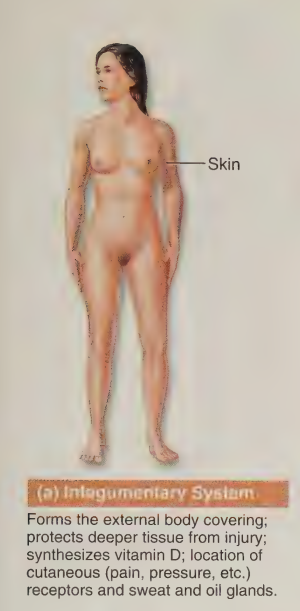
skeletal system
system parts:
bones
ligaments
appendages/ appendicular bones:
axial bones:
marrow (without it bone would shatter)
yellow: adipose tissue (fat tissue)
red: creates blood cells (hematopoiesis)
system funcs:
storing minerals (calcium, phosphorus for strength)
creating blood
providing framework for body
protecting certain organs
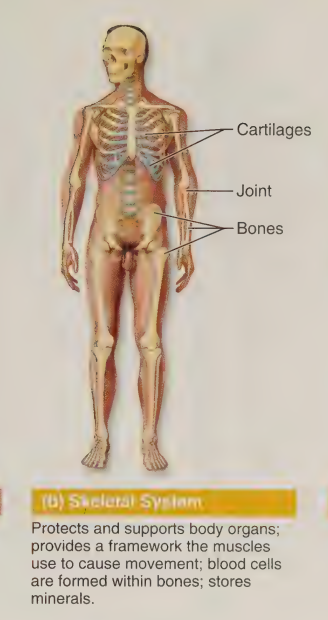
Muscular system
system parts:
muscles
latimus:
skeletal muscle
smooth muscle
cardiac muscle
system funcs:
to contract/shorten to create movement
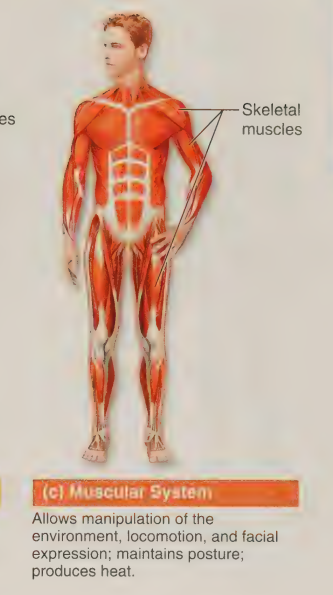
Nervous system
system parts:
nerves
cranial nerves
brain
spinal chord
neurons
motor (movement)
sensory (detection)
ex: texture
interneurons (decision making)
system funcs:
sending electrochemical signals
detection (input thru sensory neurons)
ex: feeling pain
reaction
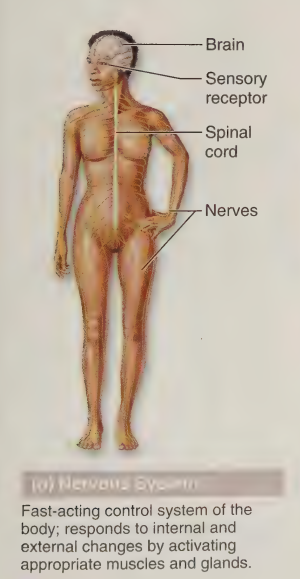
Endocrine system:
endo=internal
system parts:
pituitary gland
thyroid gland
pancreas
mammary glands
system funcs:
producing hormones (usually not smth the glands need themselves)
the blood transports hormones to their location
hormones are chemical messengers
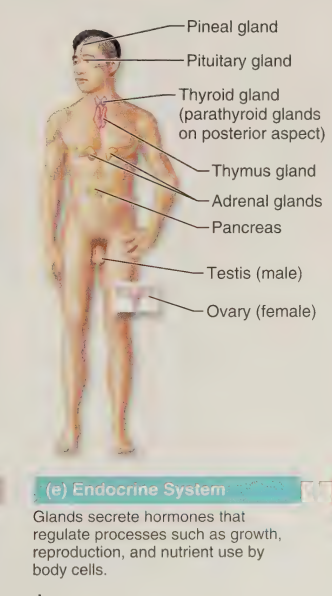
Cardiovascular system:
system parts:
heart
blood vessels
red = artery = oxygenated
blue = veins = deoxygenated
system funcs:
carry oxygen, nutrients, hormones, & other substances to and fro the tissue cells where exchanges are made
heart pumps blood out of its chambers into the blood vessels to be transported to all body tissues
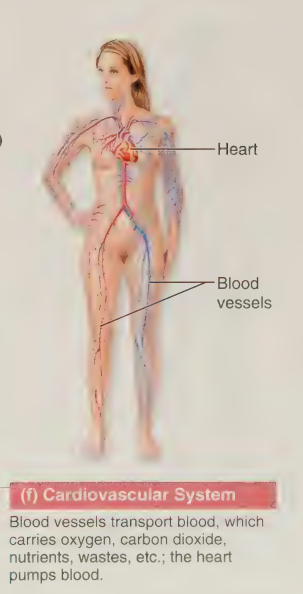
Lymphatic system
parallel to the cardiovascular system
system parts:
lymphatic vessels
lymph nodes
spleen
tonsils
system funcs:
vessels return fluid leaked from the blood back to the blood vessels so that the blood can keep flowing
clean the blood and house cells involved w immunity
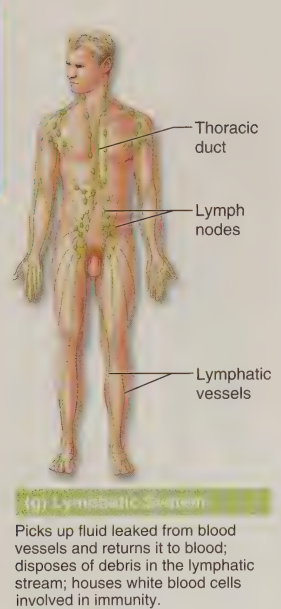
Respiratory system
system parts:
pharynx
larynx
trachea
bronchi
lungs
system funcs:
keeps the blood constantly oxygenated
removes carbon dioxide
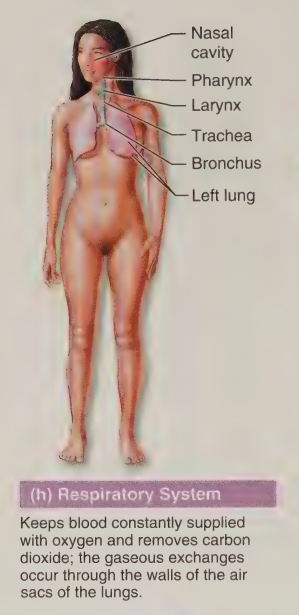
Digestive system
system parts:
piping running from mouth to butthole
esophagus
stomach
small/large intestines
liver
salivary glands
pancreas
system funcs:
break down food and deliver the products to the blood for dispersal to the body cells
pooping 🥺💩
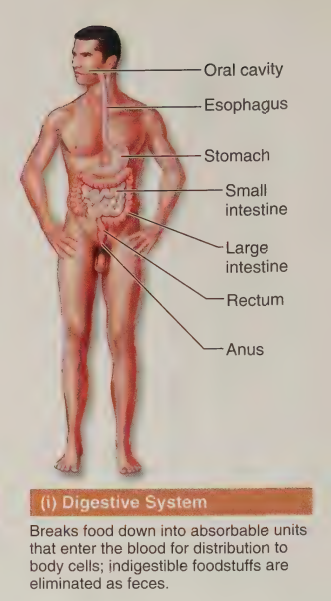
Reproductive system
system parts:
dudes:
seminal vesicles
prostate gland
penis
vas deferens
testis
scrotum
gals:
mammary tissue
uterine tube
ovary
uterus
vagina
system funcs:
creating little devils

Urinary system
system parts:
kidneys
ureters
bladder
urethra
system funcs:
removes nitrogen-containing waste (i.e urea & uric acid) from the blood and flushed them from the body in urine
constantly monitoring the amt of electrolytes in the body
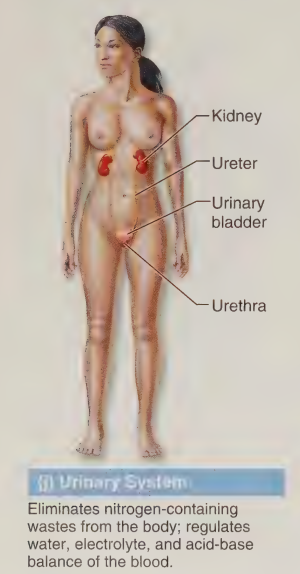
NECESSARY LIFE FUNCS
What does this highly organized human body do?
every cell of the human body is surrounded by an external membrane that contains its contents and allows needed substances in while preventing unnecessary/harmful substances from entering
skin prevents the internal organs from drying out, attacked by bacteria, and from the effects of heat/sunlight/chemicals in the environment
movement: includes all the activities promoted by the muscular system
ex: propelling ourselves from point a to point b, moving food thru the GI tract
responsiveness/irritability: the ability to sense changes (stimuli) in the environment and then react to them.
ex: ur reflex to pull your hand away from the stove if it gets too hot
most of the responsiveness is handled by the nervous system, but the body cells are irritable to some extent
digestion: the process of breaking down ingested food into simple molecules that can then be absorbed into the blood
then distributed across the cardiovascular system
metabolism: broad term that refers to all the chem reactions that occur within body cells.
regulated chiefly by the hormones secreted by the glans of the endocrine system
includes:
breaking down complex substances into simpler building blocks
making larger structures from smaller ones
using nutrients and oxygen to make ATP (adenosine triphosphate) that powers cellular activities
excretion: the process of removing excreta, or shits, from the body
several organ systems get rid of waste, like the urinary system gets rid of nitrogen-containing metabolic wastes in pee
reproduction: the production of offspring
regulated precisely by hormones
can occur on the cellular or organismal level
cellular reproduction: cell divides, producing two identical daughter cells that may then be used for body growth/repair
baby making process
growth: increase in size, usually accomplished by an increase in # of cells
for growth to occur, cell-constructing activities much occur at a faster rate than cell-destroying ones
SURVIVAL NEEDS
nutrients: contain chemicals used for energy and cell building (taken thru food)
carbohydrates: major energy-providing fuel for body cells
proteins are essential for building cell structures (as well as fat, but not as much)
fats: also cushion the body organs and provide reserve fuel
minerals & vitamins: req for chem reactions that go on in cells and for oxygen transport in the blood
oxygen: req for creating chem reactions that create energy (ATP)
water: provides fluid base fro body secretions and excretions
norm body temp:
as body temp drops below 98 F (37 C), metabolic reactions become slower until they stop
when body temp is too high chem reactions proceed too rapidly and body proteins begin to break down (denature).
atmospheric pressure: force exerted on the surface of the body by the weight of air
at high alt, where air is thin and atmosphere pressure is lower, gas exchange may be too slow to support cellular metabolism
HOMEOSTASIS
homeostasis: body’s ability to maintain relatively stable internal conditions even tho the outside world is constantly changing
dynamic state of equilibrium/ a balance in which internal conditions change and vary but always stay within very narrow limits
communication is achieved chiefly thru the nervous and endocrine system (working together)
variable: factor being regulated
stimuli: environmental changes
all homeostatic control mechanisms have three components:
receptor: some type of sensor that monitors and responds to changes in the environment It responds to such stimuli by sending info (input) to the second element, control center via afferent pathways
control center: determines the level (set point) at which a var is to be maintained, analyzes info it receives and then determines the appropriate response or course of action
effector: provides the means for the control centers response (output) to the stimulus. info flows from the control center to the effector along the efferent pathway. the results of the response feeds back to influence the stim, either by depressing it (neg feedback) or enhancing it (pos feedback)
neg feedback mechanisms: the net effect of the response is to shut off the orig stim or reduce its intensity
ex: thermostat set at 68F—> the heater will turn on when temp drops below set temp—> warmer house—> back to set temp
REDUCED the stimulus
pos feedback systems: rare, but tend to increase the original stimulus and to push the variable farther from its original value
ex: childbirth- hormones increase and increase until the baby is birthed
homeostatic imbalance: any disease, since it alters the body’s ability to maintain homeostasis